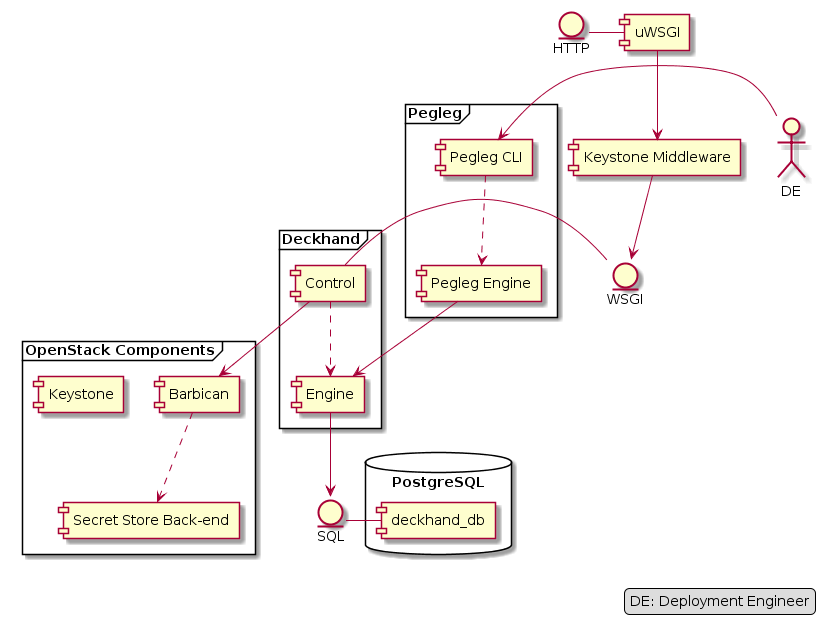3.3 KiB
Developer Overview of Pegleg
Pegleg's core mission is to, alongside Deckhand, facilitate document authoring strategies within Airship, by:
- aggregating documents across multiple revisioned repositories, each of which contains multiple documents defining sites' software and hardware stacks
- providing early linting of documents prior to their collection and eventual deployment
- including utility functions enabling operators and developers alike to list available sites, render individual manifests via Deckhand, bootstrap repositories with Pegleg-compliant directory layouts, to name a few
Architecture
Pegleg, as a CLI, has a rather simplistic architecture. It is meaningful to visualize Pegleg alongside Deckhand:

Components
cli
The Pegleg cli module implements the user-facing CLI.
For more information about this module, reference the CLI documentation <pegleg-cli>.
engine
The engine module implements the following
functionality:
- document linting
- document rendering via Deckhand
- document aggregation
- additional document utility functions
Developer Workflow
Because Airship is a container-centric platform, the developer workflow heavily utilizes containers for testing and publishing. It also requires Pegleg to produce multiple artifacts that are related, but separate: the Python package, the Docker image and the Helm chart. The code is published via the Docker image artifact.
Pegleg strives to conform to the Airship coding conventions.
Python
The Pegleg code base lives under pegleg. Pegleg supports
py35 and py36 interpreters.
Docker
The Pegleg Dockerfile is located in /images/pegleg along
with any artifacts built specifically to enable the container image.
Make targets are used for generating and testing the artifacts.
make images- Build the Pegleg Docker image.
Pegleg, as a containerized CLI, uses Docker via
tools/pegleg.sh to execute CLI commands. Commands can also
be executed using the Makefile target:
run_pegleg.
Testing
All Pegleg tests are nested under tests.
Pegleg comes equipped with a number of tox targets for running unit tests, as well as pep8 and Bandit checks.